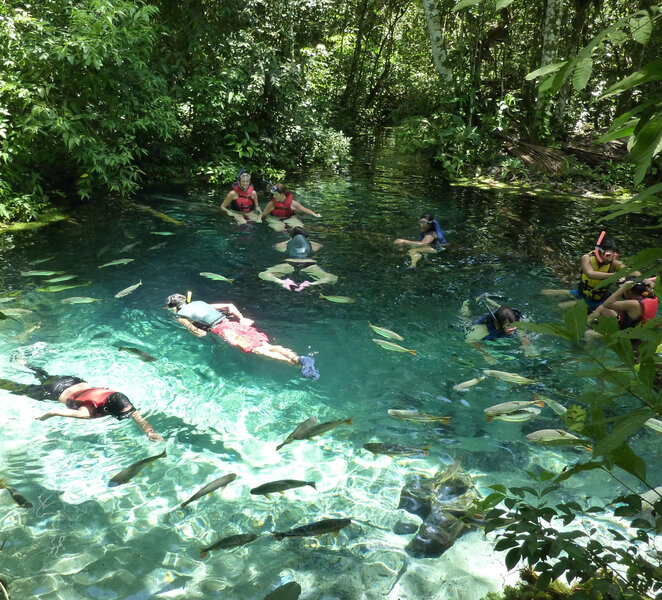Is the eco-tourism boom putting wildlife in a new kind of danger?
Loading...
Ecotourism has grown beyond a niche industry to become a global cash cow. However, a new study indicates that it may be doing more harm than good.
"Recent data showed that protected areas around the globe receive 8 billion visitors per year; that's like each human on Earth visited a protected area once a year, and then some!" Dr. Dan Blumstein, of the University of California, Los Angeles, said in a press release. "This massive amount of nature-based and eco-tourism can be added to the long list of drivers of human-induced rapid environmental change."
The reason? Over time, behavioral changes are induced when animals within protected landscapes become accustomed to the humans who take their pictures, ride, or snorkel with them. This is because it dulls their natural instincts to flee when humans are around, which affects their responsiveness not only to tourists, but poachers as well. This also reduces animals’ awareness and ability to respond to animalian predator attacks.
According to the study, to be published on Friday in “Trends in Ecology & Evolution,” these behavioral changes could have a ripple effect on ecosystems as a whole. “Eco-tourism is in some respects similar in this regard to domestication or urbanization,” reports the press release. “In all three cases, regular interactions between people and animals may lead to habituation – a kind of taming.”
What the researchers are finding occurs in protected habitats around the world also takes place in urban areas. The larger cities become, the more interactions occur between wild animals and humans. Wild animals may remain in what was formerly their habitat, but subtle transitions in behavior occur over time as cities grow and develop. Not only do these once-wild animals become bolder, but lower down on the food chain, typical prey animals suffer greater risk of attacks from predators because prey species in an urban environment no longer expect the presence of outside threats.
The study calls this effect a “human shield.” The presence of humans, whether as tourists or as residents in an upscale high-rise, forms a kind of protective barrier against the presence of predatory species, both reducing the presence of predatory species and prompting decreased vigilance against attack within formerly threatened prey.
Significantly, the researchers also found that not only do habituated animals lose their fear of perceived predators, their physical appearances also undergo changes as compared to their wild counterparts. These include silver foxes, who lost pigment and grew shorter ears and floppy tails when they were bred in captivity.
The study also finds that park managers and employees induce habituation in the animals they manage. This is in order to produce the desired experience that ecotourists are so eager to see. The researchers cite Ugandan park rangers at Kibale National Park who repeatedly interacted with the chimpanzees under their care in order to “improve the quality of chimpanzee-watching ecotourists.” Over time, the chimpanzees became used to the presence of humans, which then made them more likely to come closer and respond to being photographed later.
To reduce those effects, he recommends implementing better zoning and changes to the temporal patterns of visits in protected areas. Dr. Geffroy also stresses the role that human feeding plays in developing bolder behaviors. "Supplying food to wild animals for tourism purposes [leads] animals to get really close [to] humans and we don't really know what could be the long term consequences of such a practice," he told the Monitor in an email.
“Our objective was to highlight a potential problem. We believe that we have done so but understanding the conditions under which it occurs and its magnitude is essential,” Dr. Blumstein said in an email to the Monitor. “For instance, we expect that differences in temporal and spatial human visitation should influence the degree to which animals ‘let down their guard.’ And, we expect that some individuals but perhaps not all, will be more vulnerable to predators. It is important to realize that in subdivided populations, even slight changes in mortality rates can have a profound effect on the ability of a population to persist over time.”






